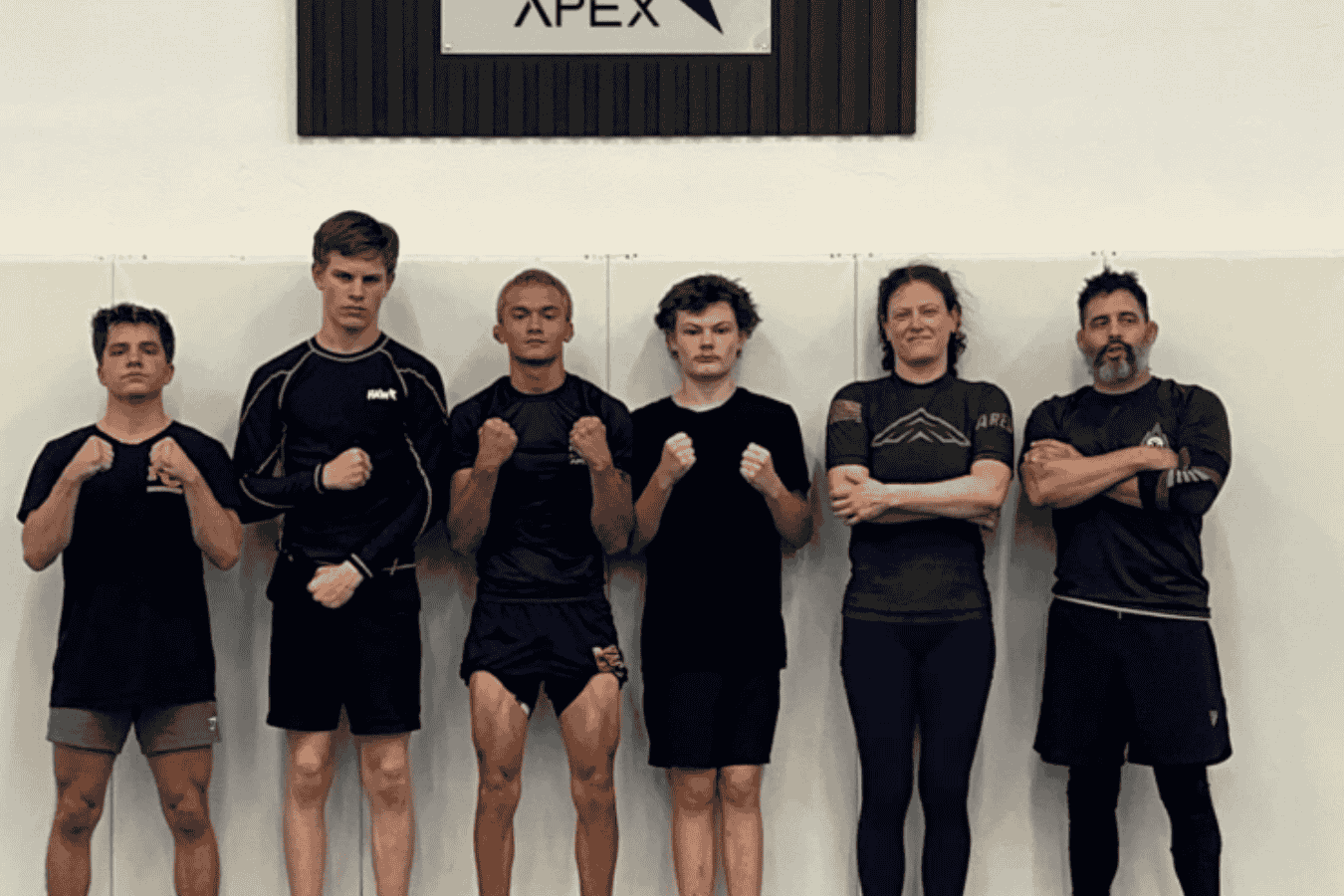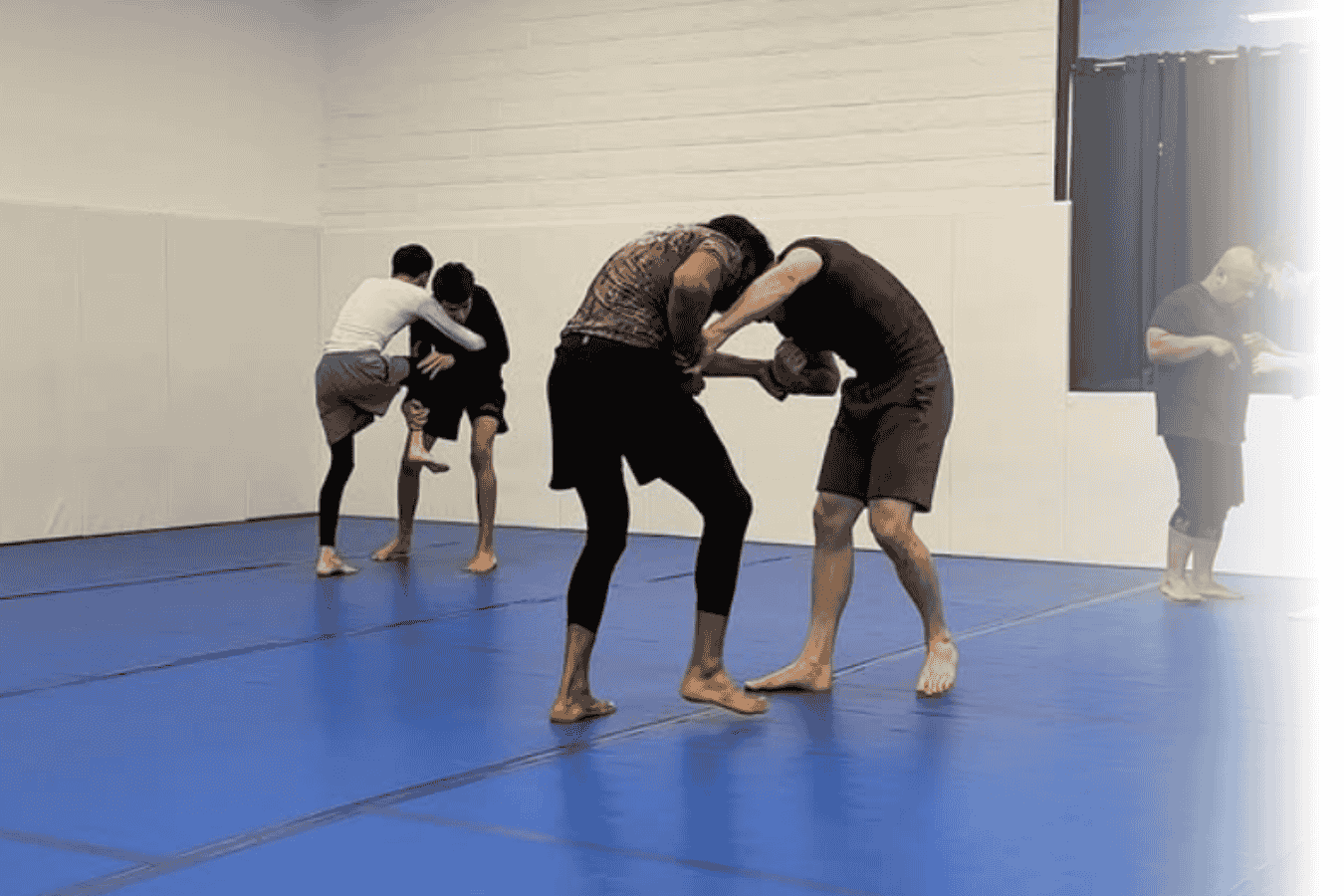
THE APEX GRAPPLING BLOG

May 29, 2025
When it comes to martial arts, submission grappling stands out as one of the most effective systems for self-defense, fitness, and mental focus. Whether you're training for competition, weight loss, or simply to build confidence, having a balanced training routine is key to long-term success and injury prevention. At Apex Grappling Vacaville , we don’t just teach grappling—we coach students of all ages and fitness levels to train smarter, not just harder. A structured plan helps you avoid burnout, prevent injury, and steadily improve on and off the mats. What Is Submission Grappling? Submission grappling —often referred to as no-gi Brazilian Jiu-Jitsu—focuses on ground control, escapes, joint locks, and chokeholds. Unlike traditional striking arts, it emphasizes technique, leverage, and strategy over brute force. Great for all body types Real-world self-defense applications Full-body workout that engages the mind Core Components of a Balanced Submission Grappling Training Routine To progress efficiently, your weekly grappling schedule should include the following elements: 1. Technical Drilling Purpose: Improve precision, timing, and muscle memory. Recommended Frequency: 2–4 times per week Examples: Guard retention drills Armbar transitions Escape sequences Tip: Choose 1–2 positions to focus on weekly. Mastering a few things deeply beats spreading yourself too thin. 2. Live Rolling (Sparring) Purpose: Test techniques under pressure. Recommended Frequency: 2–3 sessions per week (moderate intensity) Best Practices: Mix partners (different skill levels and body types) Set positional sparring goals (e.g., only start from guard) Rest when needed—quality over quantity Avoid going 100% every round—save high-intensity efforts for peak performance days. 3. Strength and Conditioning Purpose: Build muscular endurance, injury resistance, and explosive power. Recommended Frequency: 2–3 times per week (non-training days) Focus Areas: Core stability Posterior chain (glutes, hamstrings, back) Grip strength Top Movements: Deadlifts, pull-ups, kettlebell swings Farmer’s carries Bodyweight circuits (great for at-home sessions) 4. Mobility and Recovery Purpose: Prevent injury and improve range of motion. Recommended Frequency: Daily (10–15 minutes) Simple Additions: Foam rolling post-class Hip openers Shoulder mobility drills Consistency is key. You don’t need a 60-minute yoga class—just 10 focused minutes a day can keep you on the mats longer. 5. Mental and Tactical Study Purpose: Improve decision-making and strategy. Recommended Frequency: 1–2 times per week Ideas: Watch instructionals (e.g., BJJ Fanatics, Grapplers Guide) Review your rolls (video analysis) Create flowcharts of positions you struggle with Grappling is a physical chess match. Strategic thinking off the mats will accelerate your growth. Why Submission Grappling Is Perfect for Adults and Parents At Apex Grappling Vacaville, our student base includes busy parents, working professionals, and motivated teens. Here's why they choose grappling: Adults Seeking Fitness Burn 500–1,000+ calories per session Build lean muscle without lifting weights Stress relief through focused movement Parents Looking for Kids' Classes Safe, structured, and discipline-based training Teaches non-violent conflict resolution Builds confidence and social skills How to Structure Your Week (Sample Schedule) Beginner Training Plan (2 Days/Week): Day 1: Technique + Light Rolling Active Rest Day: Strength + Movement Drills Day 2: Technique + Positional Sparring Intermediate Plan (4 Days/Week): Day 1: Drilling + Rolling Day 2: Strength Training Day 3: Rolling + Mobility Day 4: Recovery (mobility or light yoga) Frequently Asked Questions (FAQ) 1: Can I train submission grappling if I’m not in shape? Absolutely. Many of our students start with zero experience or fitness background. Progress is personalized, and improvements happen quickly with consistent effort. 2: How often should I train to see results? 2–3 times per week is great for beginners. With good rest, nutrition, and mobility, you can gradually increase to 4–5 sessions weekly. 3: Will grappling help me lose weight? Yes! Grappling is a high-calorie, full-body workout that also builds lean muscle—making it excellent for fat loss and cardiovascular health. 4: How does grappling compare to striking for self-defense? Submission grappling lets you control and neutralize threats without throwing a punch—ideal for real-world scenarios where de-escalation is key. Build Your Routine, Build Your Confidence A balanced submission grappling training routine isn’t just about physical gains—it’s about becoming more confident, capable, and in control both on and off the mats. Whether you're looking to get in shape, compete, or protect yourself and your loved ones, Apex Grappling Vacaville has the coaching, community, and curriculum to help you succeed . Ready to start your martial arts journey? Book your free trial class at Apex Grappling Vacaville today!

May 29, 2025
What Is Submission Grappling? Submission grappling, sometimes called "no-gi Brazilian Jiu-Jitsu," is a ground-based martial art focused on control, leverage, and submissions. Unlike striking arts, it relies on positioning, joint locks, and chokeholds to neutralize an opponent without throwing a single punch. At Apex Grappling Vacaville, we specialize in teaching submission grappling as a form of self-defense , emphasizing discipline, self-control, and strategic thinking. The Real Goal: Avoiding a Fight Before It Starts Situational Awareness — Your First Line of Defense One of the first things you learn in submission grappling is how not to be caught off guard . ✔ Recognize risky environments ✔ Understand body language and warning signs ✔ Keep a safe distance in confrontations Submission grappling helps sharpen your awareness so you can avoid bad situations before they escalate. Confidence Deters Confrontation Many altercations start when one party senses weakness in the other. Grappling students—adults and kids alike—develop non-verbal confidence through: Controlled sparring Stress inoculation drills Consistent, measurable progress This confidence radiates in posture and voice, making would-be aggressors think twice. Verbal De-Escalation Tactics At Apex Grappling Vacaville, we teach students to use verbal strategies to stay safe , especially in high-stress moments. Top 5 Verbal De-Escalation Techniques: Stay calm: Deep breathing helps regulate your nervous system. Use open body language: Hands visible, stance neutral. Speak slowly and clearly: Keep your tone low and assertive. Acknowledge emotion without aggression: “I understand you're upset...” Exit gracefully: Walk away when it’s safe to do so. When You Can’t Walk Away — Why Grappling Prevails If a situation becomes physical, submission grappling gives you control without unnecessary violence . Unlike striking arts, grappling lets you: Subdue without hurting Escape safely Defend yourself against larger attackers Key Techniques for Self-Defense Double-leg takedown (to control distance) Rear naked choke (to end a threat quickly) Mount control (to hold without harm) Shrimping and escapes (to get away safely) These moves are taught step-by-step in our beginner classes. No experience needed! Why Grappling Is Great for Adults and Kids Alike For Adults: Improves situational awareness Offers an exciting alternative to the gym Builds real-world self-defense skills Encourages stress relief and mindfulness For Parents and Kids: Teaches self-control and respect Improves focus and discipline Provides fitness and coordination Empowers children to stand up for themselves non-violently Fun fact: Grappling also boosts problem-solving skills, as students must think several moves ahead—like a physical game of chess! FAQs About Submission Grappling and Self-Defense Q: Can submission grappling help me in a real street fight? A: Yes. It prepares you for situations where the fight goes to the ground and teaches you how to escape or control without escalating violence. Q: Do I need to be athletic to start? A: Not at all. We train adults of all fitness levels. You’ll improve gradually, and everything is beginner-friendly. Q: Is submission grappling safe for kids? A: Absolutely. Our instructors at Apex Grappling Vacaville focus on safe, age-appropriate training that emphasizes discipline and respect. Q: How does grappling compare to striking arts like boxing? A: While striking can end fights quickly, grappling allows you to control situations without throwing punches—ideal for schoolyard bullying or public self-defense scenarios. How to Get Started at Apex Grappling Vacaville Ready to train your body and your mind? Here’s how: Visit our Programs Page to explore adult and kids’ classes. Meet our expert coaches on the About Page. Have questions? Contact Us for more info. Real Strength Is Knowing When Not to Fight Self-defense isn’t just about submissions and chokes. It’s about smart decisions, emotional control, and the quiet confidence to walk away. At Apex Grappling Vacaville, we teach more than martial arts—we teach life skills. If you're looking to improve your fitness, boost your confidence, and protect yourself and your family, submission grappling is the smart, effective choice. Ready to learn how to avoid a fight before it starts? Book your free trial class at Apex Grappling Vacaville today!

May 29, 2025
Introduction Are you looking to elevate your Submission Grappling game and overall fitness? At Apex Grappling Vacaville, we emphasize not only physical techniques but also the power of controlled breathing to improve your Brazilian Jiu-Jitsu (BJJ) performance. Whether you’re an adult seeking a fun way to get fit or a parent wanting your child to learn self-defense and discipline, mastering breathing techniques can make a huge difference in your grappling journey. This article dives into why breathing is a game-changer in BJJ, the benefits it offers to both adults and kids, and how you can start incorporating these practices today. Why Breathing Techniques Are Crucial in Submission Grappling Understanding the Science Behind Breath Control Oxygen Delivery: Efficient breathing increases oxygen flow to your muscles, reducing fatigue during intense grappling exchanges. Stress Reduction: Controlled breathing helps calm your nervous system, enabling better focus and quicker decision-making under pressure. Energy Management: Proper breathing allows you to conserve energy, sustaining your performance throughout long training sessions or matches. Breathing Techniques Commonly Used in BJJ Diaphragmatic (or belly) breathing for deeper, more efficient oxygen intake. Rhythmic breathing to match the pace of your movements. Breath-holding strategies during transitions or defensive maneuvers. Benefits of Breathing Training in Grappling Enhances endurance and stamina. Improves recovery times between rounds or drills. Boosts mental toughness and reduces anxiety during competition. How Adults and Kids Benefit from Breath Control in Grappling For Adults Seeking Fitness and Self-Defense Improved Cardiovascular Health: Grappling combined with proper breathing is an excellent cardio workout. Weight Loss and Muscle Tone: Controlled breathing supports longer, more effective training sessions. Increased Confidence: Mastery of breath control builds mental resilience and self-defense readiness. For Parents Looking for Kids’ Classes Focus and Discipline: Teaching children breathing techniques helps improve concentration and patience. Stress Relief: Helps kids manage stress in school and social settings. Physical Coordination: Breath control aids in motor skills development, vital for grappling movements. Getting Started with Breathing Techniques at Apex Grappling Vacaville Beginner Tips for Effective Breath Control Practice Diaphragmatic Breathing Daily Lie on your back, place one hand on your chest and the other on your belly. Breathe deeply through your nose, ensuring your belly rises more than your chest. Integrate Breathing with Movement During drills, synchronize your breathing with your grappling movements to maintain rhythm and energy. Use Breath as a Reset Tool When caught in a tough position, use slow, controlled breaths to regain composure and plan your next move. Classes That Emphasize Breath Control Our beginner Submission Grappling classes introduce breathing fundamentals. Advanced classes focus on integrating breath control with complex techniques. Family-friendly sessions ensure kids learn these skills early. Common Questions About Breathing Techniques in BJJ FAQ Q1: How long does it take to see improvements from breath control training? A: Most students notice better endurance and focus within a few weeks of consistent practice. Q2: Can breathing techniques help during competition? A: Absolutely. Controlled breathing reduces stress and helps maintain peak performance under pressure. Q3: Is breath control suitable for kids? A: Yes, we tailor breath control exercises to be age-appropriate, helping kids improve both physically and mentally. Q4: Do I need special equipment to practice breathing techniques? A: No special equipment is necessary—just awareness and regular practice. Conclusion Breathing techniques are a fundamental yet often overlooked aspect of Submission Grappling that can dramatically enhance your performance, fitness, and mental clarity. Whether you’re an adult aiming to get in shape or a parent seeking a productive and empowering activity for your children, mastering breath control at Apex Grappling Vacaville will give you the edge you need. Ready to start your martial arts journey? Book your free trial today at Apex Grappling Vacaville and experience the difference that proper breathing can make!

May 29, 2025
In today's unpredictable world, equipping yourself with effective self-defense skills is crucial. Among various martial arts, submission grappling stands out as a practical and efficient choice for individuals seeking to protect themselves. This article delves into the advantages of submission grappling for self-defense, highlighting its effectiveness, accessibility, and real-world applications. What is Submission Grappling? Submission grappling, often associated with Brazilian Jiu-Jitsu (BJJ), focuses on ground fighting techniques that emphasize leverage, joint locks, and chokeholds to control or submit an opponent. The core principle is to use technique and positioning to overcome strength disparities, making it accessible and effective for individuals of all sizes. Why Submission Grappling is Ideal for Self-Defense Submission grappling offers several compelling reasons for its effectiveness in self-defense situations: Leverage Over Strength: By utilizing leverage and technique, grapplers can control or submit larger and stronger opponents, minimizing the risk of injury. Control and Restraint: Grappling techniques allow you to neutralize threats by controlling an assailant's movements, providing options to de-escalate or immobilize without relying on striking. Adaptability in Various Scenarios: Whether standing or on the ground, submission grappling provides techniques applicable in diverse situations, enhancing your ability to defend yourself effectively. Essential Submission Grappling Techniques for Self-Defense Mastering fundamental submission grappling techniques can significantly enhance your self-defense capabilities. Here are some key moves: 1. Guillotine Choke An effective technique when an opponent attempts a takedown, the guillotine choke allows you to counter by wrapping your arm around their neck, applying pressure to force a submission. Application: Standing Defense: As an opponent shoots for a takedown, you can apply the guillotine choke while remaining upright, preventing them from bringing you to the ground. 2. Americana Shoulder Lock From dominant positions like mount or side control, the Americana shoulder lock involves isolating the opponent's arm and applying pressure to the shoulder joint, leading to a submission. Application: Maintaining Control: This technique allows you to keep the dominant position while executing the submission, ensuring safety and effectiveness. 3. Armbar A versatile submission applicable from various positions, the armbar targets the opponent's arm by hyperextending the elbow joint, compelling them to submit. Application: From Guard Position: While on your back with the opponent in your guard, you can execute the armbar by isolating their arm and applying pressure. Advantages of Submission Grappling in Self-Defense Incorporating submission grappling into your self-defense strategy offers several benefits: Minimal Risk of Injury: Training focuses on technique and control, reducing the likelihood of causing harm to yourself or others. Enhanced Confidence: Regular practice builds self-assurance, knowing you possess effective tools to handle potential threats. Physical Fitness: The dynamic movements involved improve strength, flexibility, and overall health, contributing to a well-rounded fitness regimen. Getting Started with Submission Grappling Embarking on your submission grappling journey involves: Finding a Reputable School: Look for academies with experienced instructors who emphasize realistic self-defense training in a safe environment. Consistent Training: Regular practice is key to mastering techniques and building muscle memory essential for effective self-defense. Setting Personal Goals: Define your objectives, whether it's gaining confidence, improving fitness, or acquiring specific self-defense skills. Frequently Asked Questions (FAQ) Q1: Is submission grappling suitable for beginners with no prior martial arts experience? Yes, submission grappling is accessible to beginners. Training emphasizes technique over strength, allowing individuals to progress at their own pace. Q2: How does submission grappling compare to striking arts like boxing or Muay Thai for self-defense? While striking arts focus on delivering powerful blows, submission grappling emphasizes controlling and submitting an opponent through leverage and technique. Both have their merits, but grappling offers effective solutions when a confrontation goes to the ground. Q3: Can submission grappling techniques be applied in real-life self-defense situations? Absolutely. Many self-defense scenarios involve close-quarters combat where grappling techniques can neutralize threats effectively. Q4: Will training in submission grappling improve my overall fitness? Yes, training involves dynamic movements that enhance strength, flexibility, cardiovascular endurance, and overall physical health. Q5: How long does it take to become proficient in submission grappling for self-defense? Proficiency varies among individuals. With consistent training and dedication, many practitioners develop effective self-defense skills within months. Conclusion Submission grappling offers a practical, effective, and accessible approach to self-defense. By focusing on technique and leverage, it enables individuals to defend themselves against larger opponents safely. Embarking on this martial arts journey not only equips you with valuable skills but also enhances physical fitness and personal confidence.


